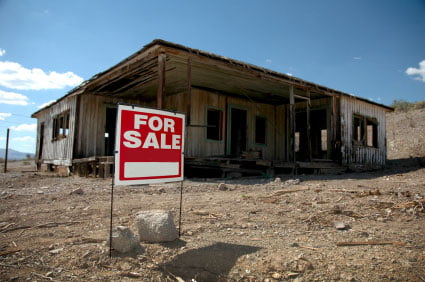Foreclosure sales fell in the third quarter of 2013 (Q3 2013) in California. The number of real estate owned property (REO) resales and notice of default (NOD) filings also decreased from the prior quarter.
REO resales are down
Roughly 9,000 REO resales took place in Q3 2013. That is less than half the number of REO resales one year earlier. REO resales accounted for 8% of all California resale activity in Q3 2013, down from 20% one year ago.
At foreclosure sales, individuals (mainly speculators), rather than foreclosing lenders or the government, bought 48% of homes sold. This is up from 39% last year. This third-party high-bidder situation indicates speculators remain peculiarly optimistic about a future rise in real estate resale pricing. However, the optimism is waning.
Related articles:
NODs decrease from one year prior
NODs recorded in California during Q3 2013 totaled just over 20,000. That is less than half the number of NODs recorded a year earlier, making it the second lowest quarter for NODs since 2006.
NOD volume peaked at 135,431 NODs recorded in the Q1 2009.
In California, an average of nine months pass between an NOD recording and the foreclosure sale, indicated by a trustee’s deed.
Foreclosures decline
Foreclosure sales recorded in Q3 2013 totaled just over 8,000. That is also less than half the number of foreclosures recorded a year earlier.
The number of foreclosure sales is still higher than before the recession.
Foreclosure sales occur most often among low-tier homes:
- zip codes with median sale prices below $200,000 saw 2 homes foreclosed per 1,000 homes during Q2 2013.
- zip codes with median prices between $200,000 and $800,000 saw only 0.8 foreclosures per 1,000 homes.
- foreclosures took place at the rate of 0.2 per 1,000 homes in areas with average prices over $800,000.
The trend going forward will be a slight decline in the number of foreclosures through mid-2014, due to today’s decreased level of NODs. However, foreclosures won’t remain at this lower level when mortgage rates again begin to rise.
Foreclosures will only return to healthy pre-recession levels when increased mortgage originations can be supported by permanent jobs.
Of all NODs, 43% currently go on to foreclosure sales. Projecting this forward, foreclosures will be up slightly in two to three quarters. Based on the number of NODs in Q3 2013, around 8,000-9,000 foreclosures will occur in Q2 2014.
Among California’s largest counties, the greatest one-year drops in trustee’s sales took place in Santa Clara (-63%), San Mateo (-65%) and Alameda (-62%) counties.
Short sales: lenders’ Plan B
Roughly 16,000 short sales closed in Q3 2013. Short sales made up 14% of California home resale activity, twice the number of foreclosure sales during the quarter. This was down from 17% during the prior quarter and 26% one year earlier.
Short sales continue to eclipse foreclosures as the main route out of negative equity. Lenders go with this “Plan B” to avoid both taking on additional REO property and potential government settlements.
What’s in store?
Although steadily decreasing, foreclosures will remain higher than average due to negative equity. Negative equity still plagues just over one million California homes. However, today’s downward trend in NODs may be countered by a leveling off in home prices (and increased mortgage delinquencies) going into 2014.
For many of California’s remaining underwater homeowners, future home price increases will not create positive equity soon enough to dismiss the idea of increased strategic defaults or short sales (if the owner can prove a hardship). Eventually, increasing numbers of these homeowners will walk away, frustrated by the conduct of their mortgage lender, rising interest rates and flattening prices.
Re: CaliforniaForeclosure Starts Second-Lowest Since Early 2006 from DataQuick














